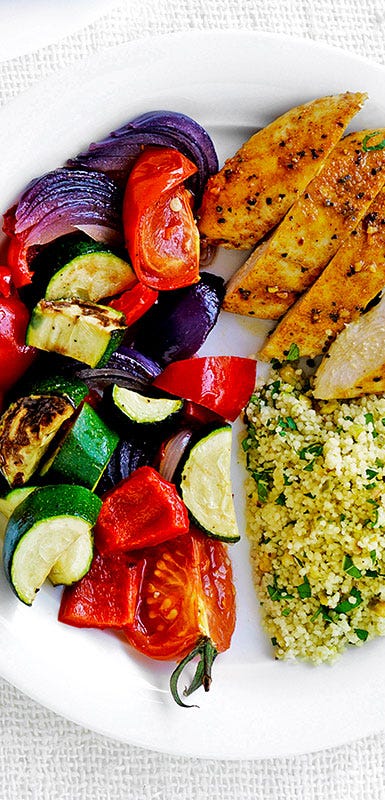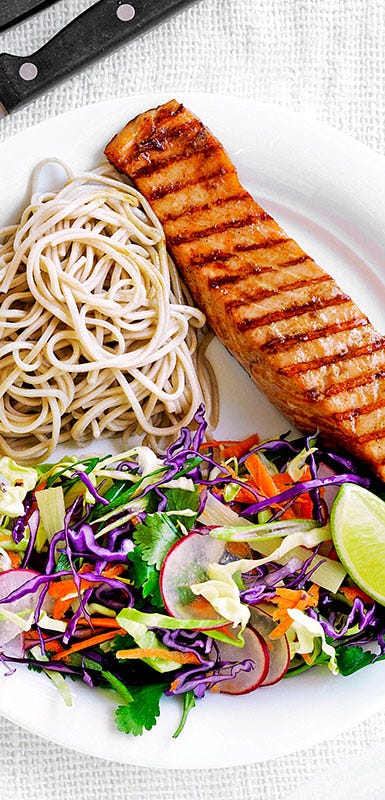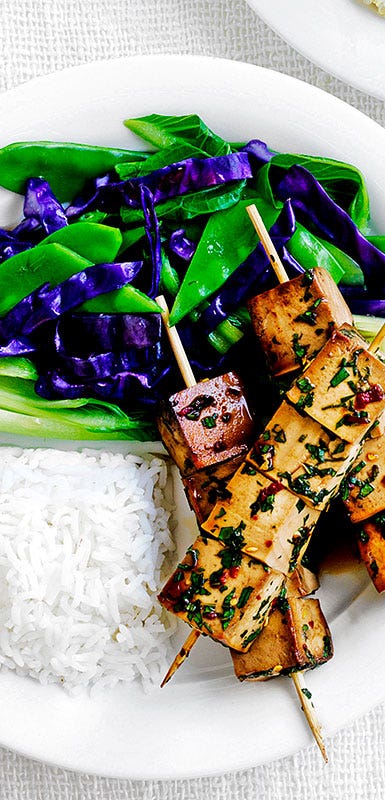How to pick the right portion sizes
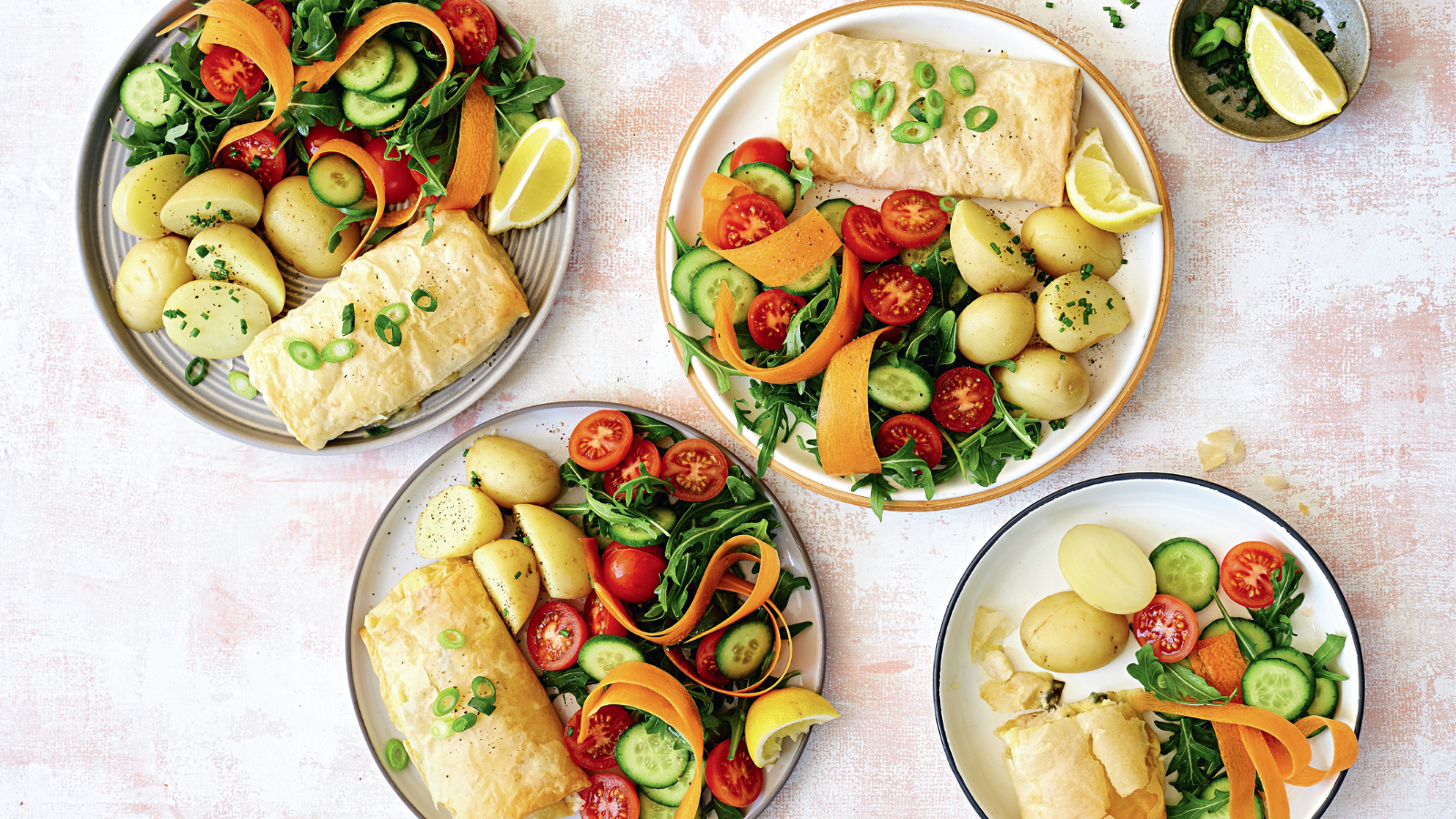

The portion size that’s right for you depends on what you’re eating and how much you need to feel satisfied while staying within your Points Budget. Using tools like measuring cups and food scales makes it easy to dole out right-for-you portions when you’re at home. But toting those tools around when you’re out to dinner or at a party? That isn't going to cut it.
How to use your hands as a portion guide
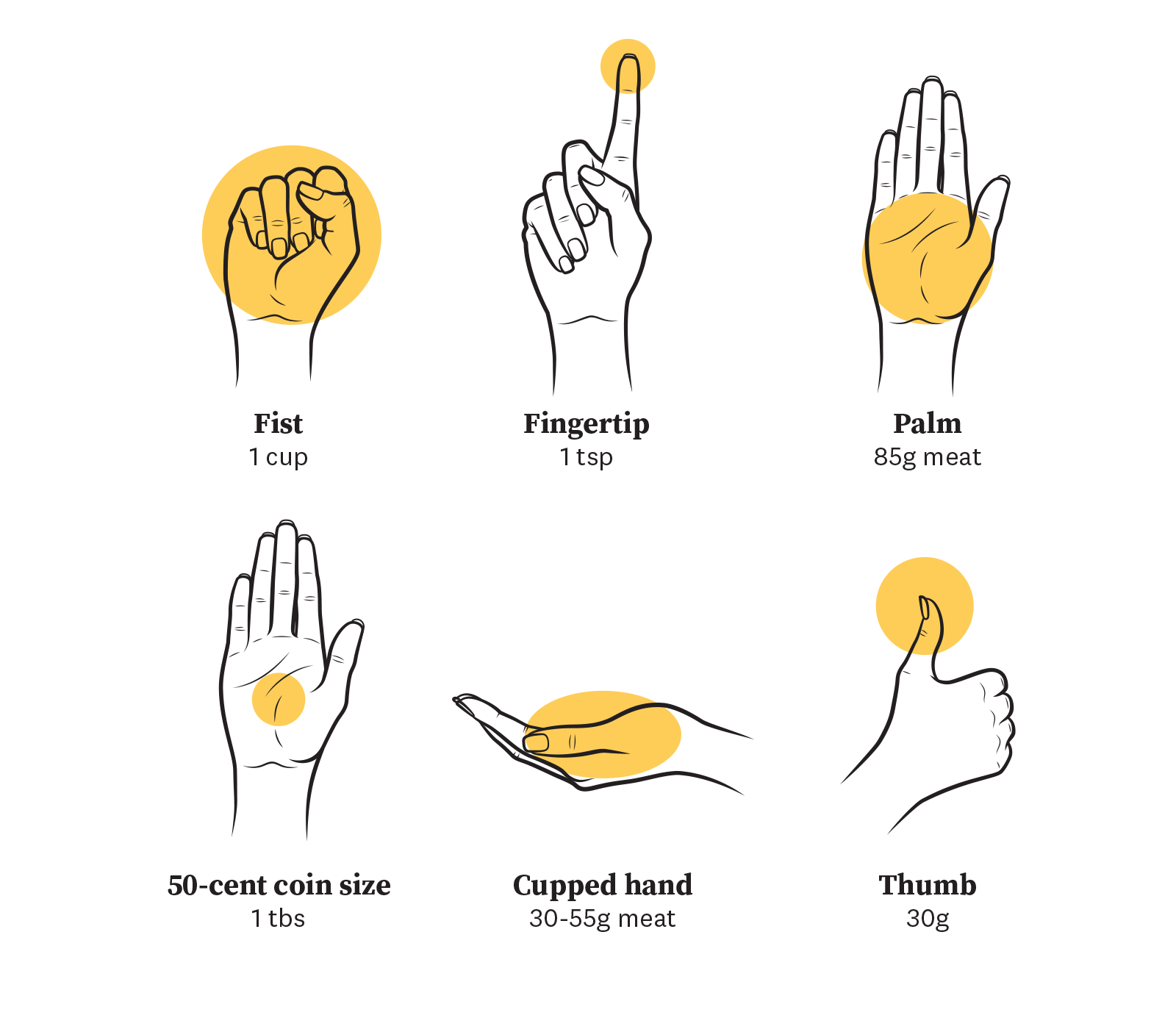
- Your fist is about the same size as 1 cup of fruit or pasta.
- Your thumb (tip to base) is the size of 30g of meat or cheese.
- Your palm (minus fingers) equals 55g of meat, fish, or poultry.
- Your cupped hand equals 30-55g of nuts or pretzels.
Of course, not all hands are the same size, so it wouldn't hurt to measure yours against some measuring spoons or cups, just so you know what you're working with.
Fruit portion guide
Although many fruits are on the ZeroPoint food list, and they provide a lot of health benefits, they aren't calorie-free. So, what should you aim for? The general rule is two servings of fruit a day, although you can eat more but your weight loss should be your guide.
What does a serving of fruit look like?
A serve is about 150g or:
- 1 medium – apple, banana, orange or pear
- 2 small – apricots, kiwi fruit or plums
- 1 cup – fresh fruit salad
What about fruits that have Points?
Some fruit is more energy-dense (meaning, higher in calories) and easier to overeat than others. They're still nutritious, but you'll want to track them. For example:
- Coconut: ¼ cup
- Dried fruit: ¼ cup
Vegetables portion guide
Many vegetables are on the ZeroPoint food list—they’re a great way to bulk out your meals and help you feel fuller, longer. The Australian dietary guidelines recommend a minimum of five serves a day.
What does a serving of fruit look like?
A serve is about 75g.
- ½ cup cooked green or orange vegetables like broccoli, spinach, carrots or pumpkin
- 1 cup green leafy or raw salad vegetables
- ½ medium or 1 small potato or other starchy vegetables like sweet potato, taro or cassava
Meat portion guide
In Australia and New Zealand we love our meat, and sometimes too much. What many consider a serving is anywhere from 2-4 times a recommended portion. Just look at what you get in a restaurant – anywhere between 250-400g of steak, when we should be eating closer to 65-80g of cooked meat. A serve of meat should take up about a quarter of your dinner plate. Here’s the lowdown:
- Red meat: aim for 65g cooked (about 90-100g raw) – this is about the size of your palm.
- Lamb lean fillet, cooked (60g)
- Poultry: aim for 80g cooked (100g raw). Think the size of a computer mouse.
Carbs portion guide
It can be easy to overdo the portions since many dishes make rice or pasta the hero of the meal, instead of vegetables or salad, or lean proteins. It’s easy to end up eating a lot of Points in one bowl. But you don’t need to avoid these foods – just watch your portion sizes. What should a portion look like?
- Rice: ½ cup, boiled
- Pasta: ½ cup (74g) cooked
- Bread: 1 slice
- Cereal: 1 cup
10 tips for measuring and portioning
The best way to learn that amount is to do some measuring. Over time, you’ll train your brain to serve up the right amount automatically. This week try weighing and measuring the foods you eat frequently, using these steps:
1. Serve yourself
What’s your typical portion? Whatever it is, dish it out. Put the amount of pasta you would usually eat into your usual bowl or plate. Then...
2. Size it up
Measure or weigh that portion, using cups or a scale. Now you know how much you’re actually eating.
3. Track it
Use your WW app to find the Points value. (Hint: The barcode scanner is great for finding packaged foods.) How does this impact your Budget?
4. Decide what works
Does this portion work well with your Budget? Remember that you can bulk up any meal or snack with your ZeroPoint foods. For example, by using a little less pasta and adding lots of sautéed veggies instead, you can enjoy a delicious dinner that’s lower in Points.
5. Keep measuring cups and spoons handy in the kitchen
Measuring spoons are especially good for measuring out oil, salad dressing, and sugar.
6. Whether you're using a tablespoon or cup, it should be levelled off
The best measuring spoons and cups are ones that can be squared off for easy levelling.
7. Take your portion and then move away
You can always go back for seconds if you're still hungry.
8. Eat on smaller plates
Or bring your lunch in a bento box.
9. Go for built-in portion control
Buy individual servings. It may cost you a bit more, but consider it a health savings.
10. Don't match your food to your plate
Researchers at Cornell University’s Food and Brand Lab found that people serve themselves 30% more food when the plate they’re using offers low contrast with the food in question—for example, serving white rice on a white plate. Try to choose plates that have a contrasting colour to the food you’re serving.

